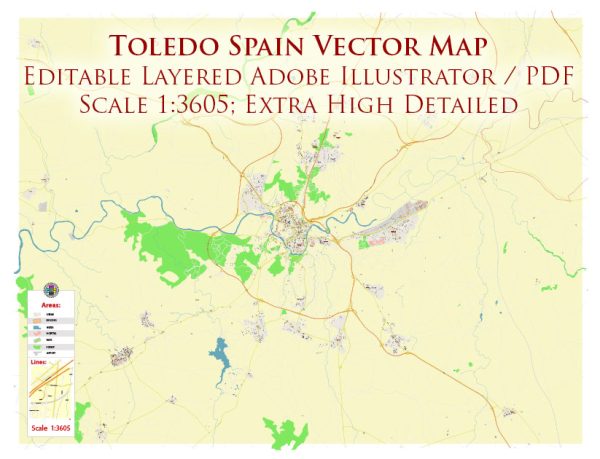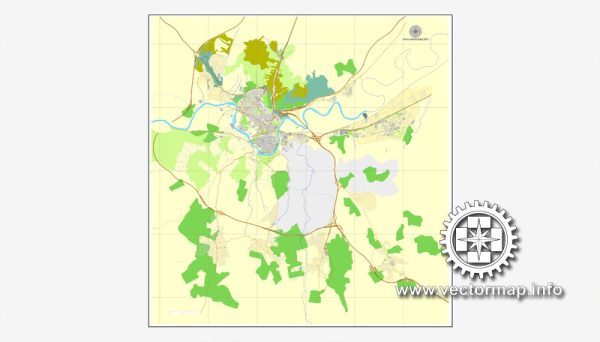Toledo, Spain, has a rich history that spans over 2,000 years, and its urban development reflects the layers of different civilizations that have inhabited the area. Here is an overview of the key aspects of Toledo’s urban development history:
- Roman Period:
- Toledo, known as Toletum in Roman times, was a significant Roman city. The Romans established a walled city with a grid plan, typical of Roman urban design. Toledo served as an important administrative and trade center during this period.
- Visigothic Era:
- After the fall of the Western Roman Empire, Toledo became the capital of the Visigothic Kingdom in the 6th century. The Visigoths left their mark on the city’s architecture, and Toledo continued to be a major cultural and religious center.
- Islamic Influence:
- In 711, Toledo fell to the Moors, marking the beginning of Islamic rule. During this period, significant architectural developments took place, including the construction of mosques, palaces, and city walls. The layout of the city was influenced by Islamic urban planning principles.
- Reconquista and Christian Rule:
- The Christian Reconquista led to the capture of Toledo in 1085 by Alfonso VI of Castile. The Christians preserved and repurposed many Islamic structures, and the city became a melting pot of Christian, Islamic, and Jewish cultures. The construction of Gothic and later Renaissance buildings characterized this period.
- Jewish Quarter:
- Toledo was home to a significant Jewish community during the Middle Ages. The Jewish Quarter, with its narrow streets and synagogues, reflects the cultural and religious diversity of the city during this time.
- Golden Age:
- The 16th century is often considered Toledo’s Golden Age. The city was a center of arts and learning, and many Renaissance-style buildings were constructed. El Greco, the famous painter, lived and worked in Toledo during this period.
- Decline and Modernization:
- In the 17th century, Toledo began to decline in importance. The capital was moved to Madrid, and the city faced economic challenges. In the 19th century, efforts were made to modernize the city, leading to the construction of new infrastructure and the renovation of older buildings.
- 20th Century and Beyond:
- Toledo faced challenges during the Spanish Civil War, and some historic buildings suffered damage. In the post-war period, there was a renewed interest in preserving the city’s cultural and historical heritage. Toledo was declared a UNESCO World Heritage Site in 1986.
- Tourism and Cultural Heritage:
- In recent decades, tourism has become a significant aspect of Toledo’s economy. The city’s well-preserved historic center, with its medieval streets, churches, and synagogues, attracts visitors from around the world.
Toledo’s urban development is a testament to its rich and diverse history, with influences from the Romans, Visigoths, Moors, and Christians shaping the city’s architecture and culture. Today, Toledo stands as a unique blend of historical and modern elements, showcasing its status as a UNESCO World Heritage Site.



 Author: Kirill Shrayber, Ph.D.
Author: Kirill Shrayber, Ph.D.